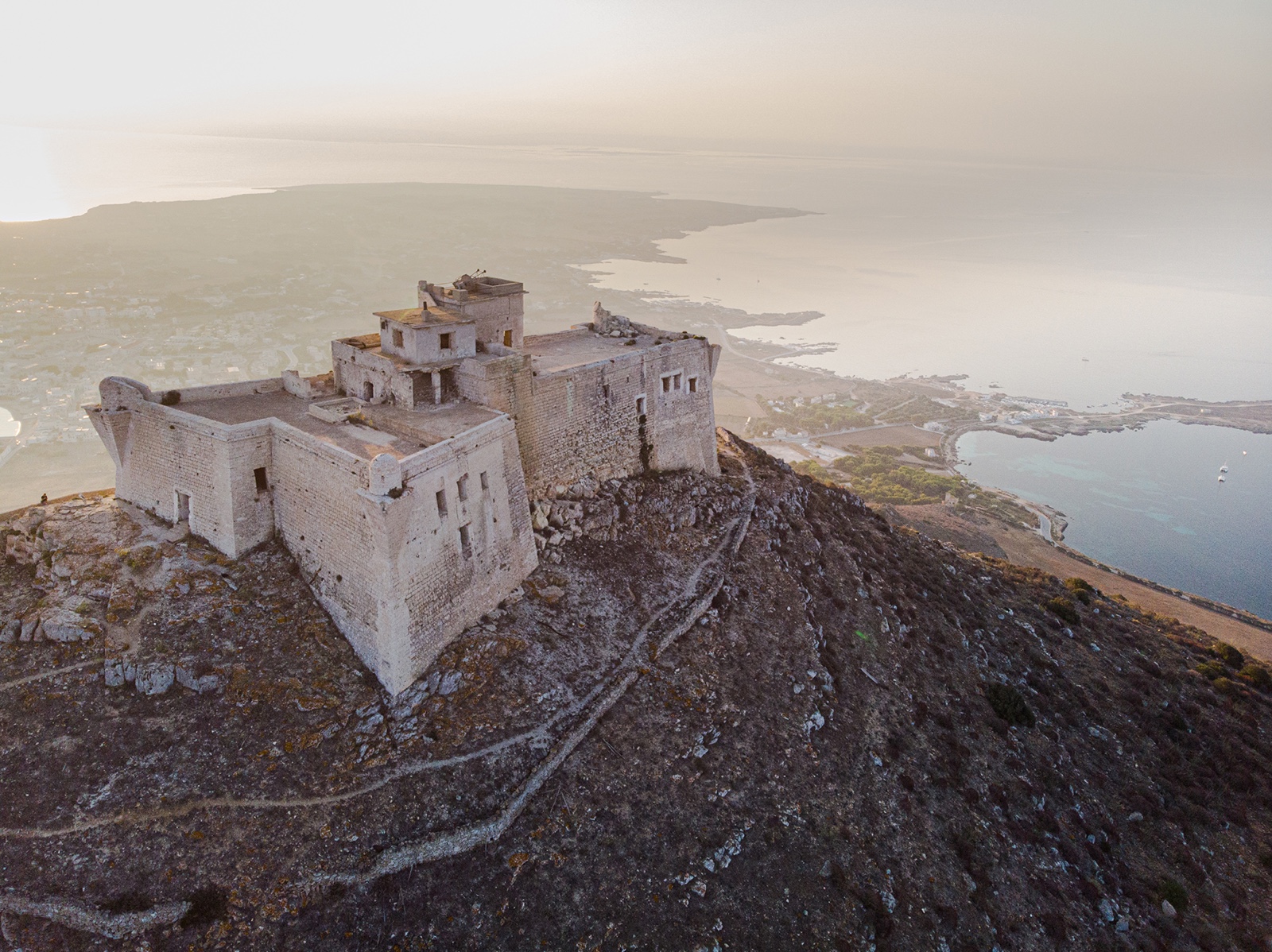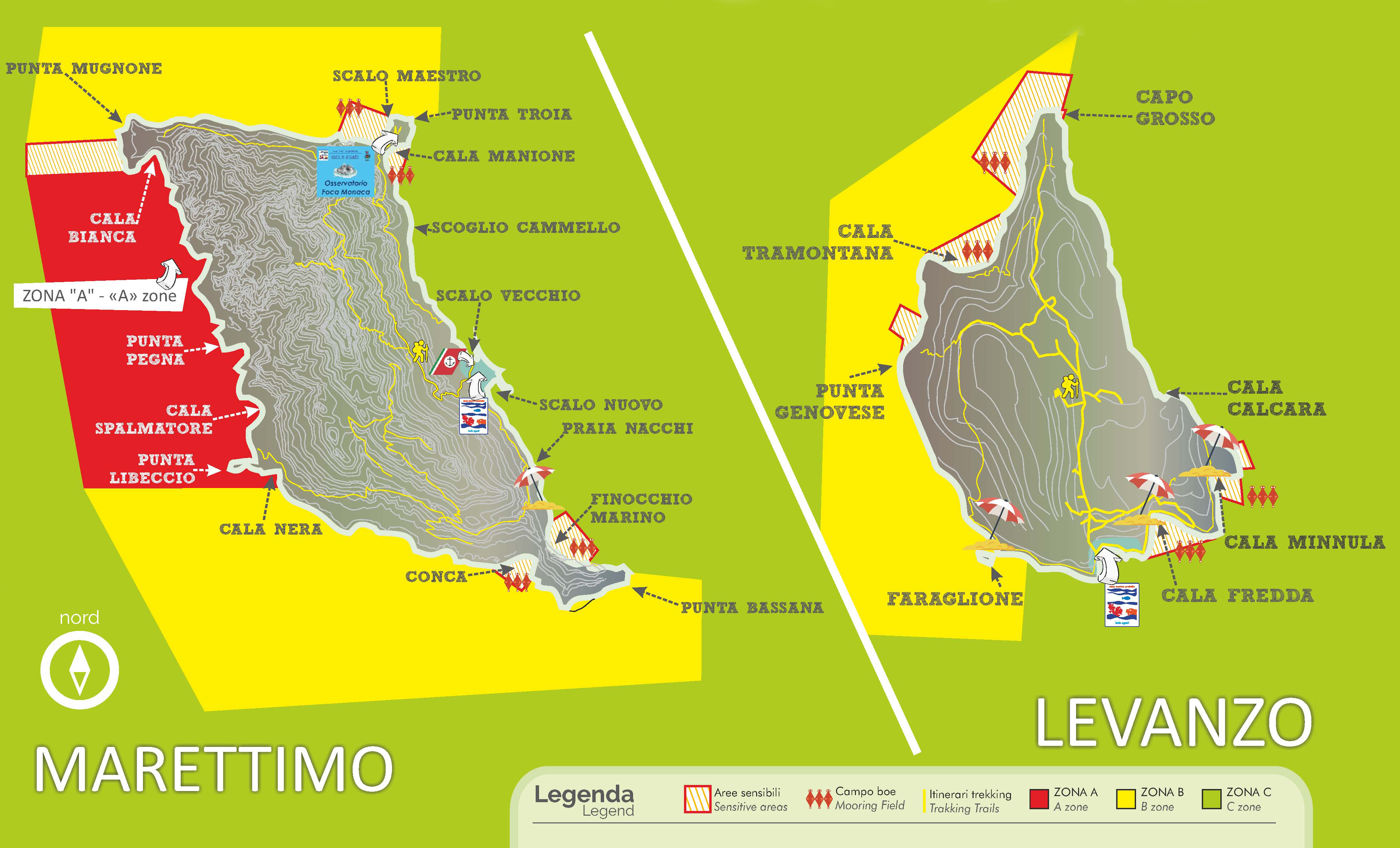The Egadi Archipelago
The Egadi Islands, whose ancient name was Aegates (from Latin) and Aigatai (from Greek) meaning "goat islands", are a group of islands located about 15 kilometers from the western coast of Sicily, between the cities of Trapani and Marsala. The Egadi Islands consist of three "major" islands: Favignana, Levanzo, and Marettimo, and one "minor" island called Formica. Together with the Maraone and Porcelli rocks, they make up the entire Egadi heritage, which covers an area of 37.45 square kilometers.
HISTORY
The Egadi Islands are ancient lands, and there are traces of the first human settlements dating back to:
- Levanzo was already inhabited in the 10th millennium BC, with prehistoric paintings (Upper Paleolithic) in the famous Genovese cave.
- The Phoenicians inhabited Favignana as early as 700 BC (with visible traces in the San Nicola area), where the caves show evidence of ancient settlements where rituals were celebrated and the dead were buried.
- Settlement on Marettimo began in the 2nd century BC, with Carthaginian and Roman military garrisons, which are now ruins.
The first inhabitants of the archipelago were probably the Phaeacians and the Lestrygonians, who came from Epirus and whose traces are found in some caves in Favignana. Then came the Sicani, around 1200 BC, who changed the name of Trinacria to Sicania (a prelude to modern-day Sicily). In 415 BC, the Athenians sent a powerful fleet to Sicily with the hope of conquering the whole island (they already controlled part of it), but the Sicilians called on the Carthaginians for help, who began to invade the area around 400 BC. In the 3rd century BC, there were the Punic Wars, and the waters around Favignana were the scene of several battles. On March 10, 241 BC, in the sea around the Egadi Islands, the naval battle that marked the end of the First Punic War took place. Gaius Lutatius Catulus defeated the Carthaginian fleet and began a dominion that changed the history of these islands. When the Roman Empire fell, the islands passed into the hands of the Vandals, then the Goths, and then the Saracens (as evidenced by the numerous watchtowers). In 1637, the Spanish Crown had to cede the Egadi Islands to the Genoese marquis Camillo Pallavicini. In 1874, the ownership of the islands passed into the hands of the Florio family, who devoted themselves to the development and enhancement of the islands through tuna fishing, ushering in the so-called "Florio Era".
TERRITORY
Among the most beautiful archipelagos in the entire Mediterranean, the Egadi Islands are characterized by pristine nature, crystal-clear waters, rocks, and clean beaches. Favignana measures 19 square kilometers and has a particular morphology that has earned it the nickname of butterfly. In the center, there are hills arranged longitudinally, with two small plains on either side that extend latitudinally. Levanzo, on the other hand, is about 4 kilometers from Favignana and is the smallest island in the archipelago. Characterized by a high and rugged coastline, its highest point is the Pizzo del Monaco, which reaches almost 278 meters. Finally, Marettimo, the furthest from Sicily, with an area of 12 square kilometers. The territory is predominantly mountainous with Dolomite calls (here are the highest peaks of the archipelago such as Mount Falcone, which reaches 686 meters in height). The nature is unspoiled and the fauna rich.
Generally widespread along the coasts are the holm oak woods while in the driest areas are rosemary and euphorbia.


